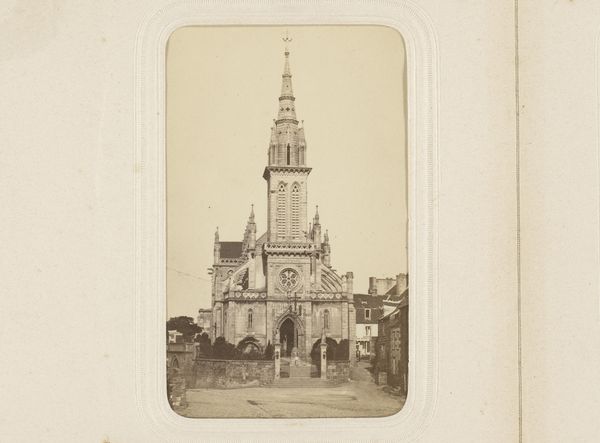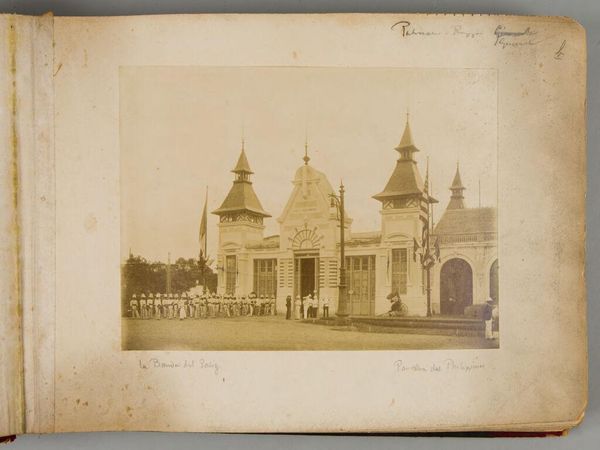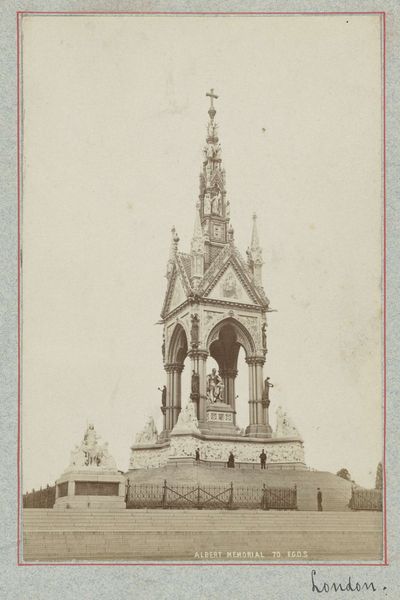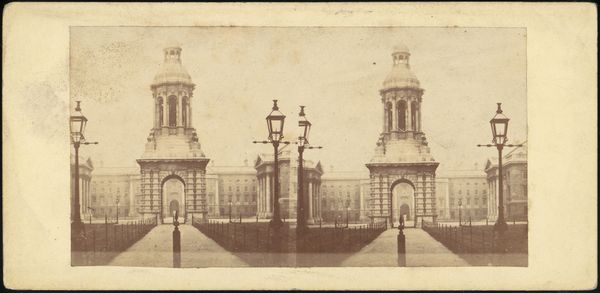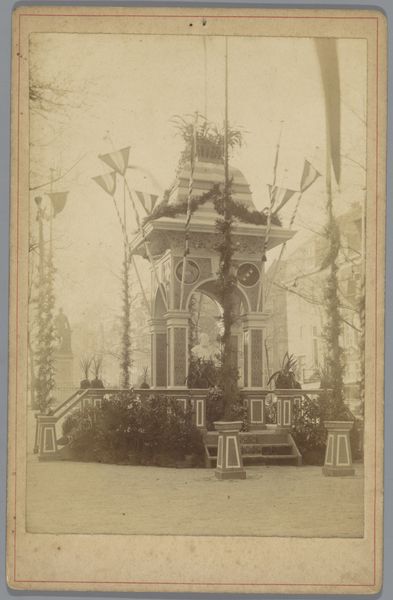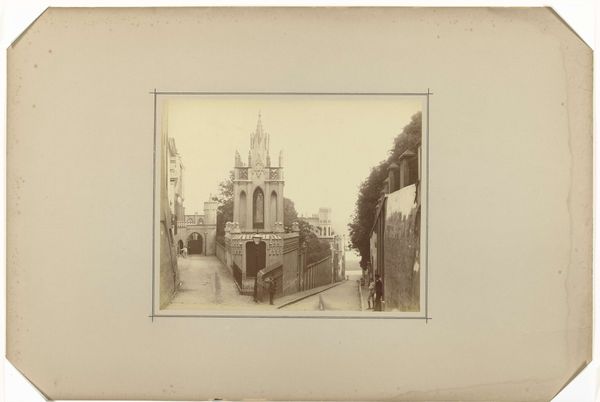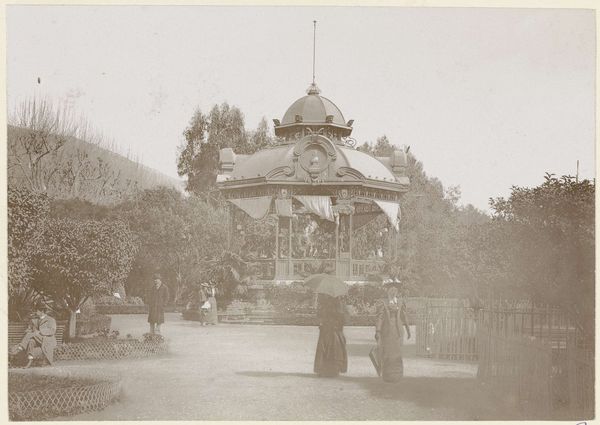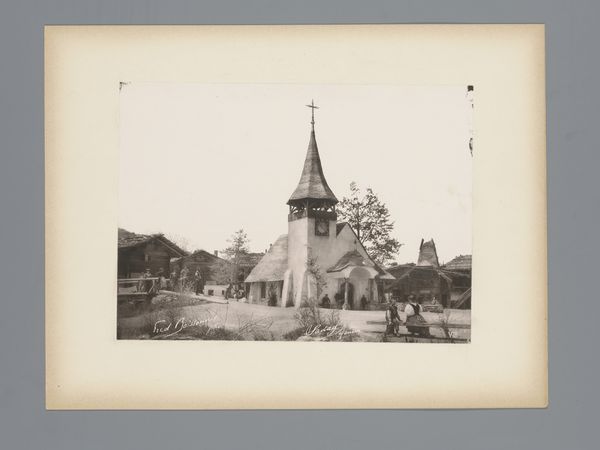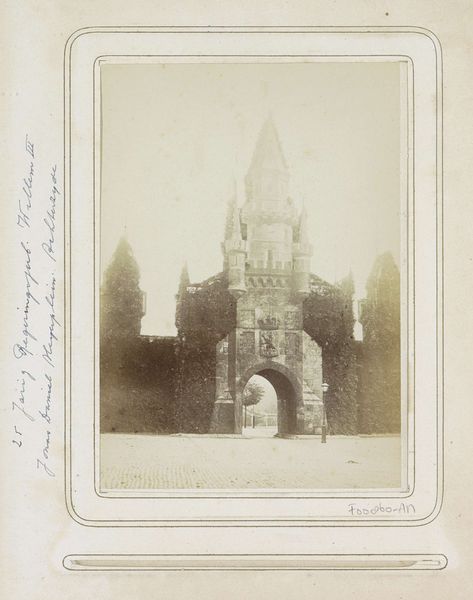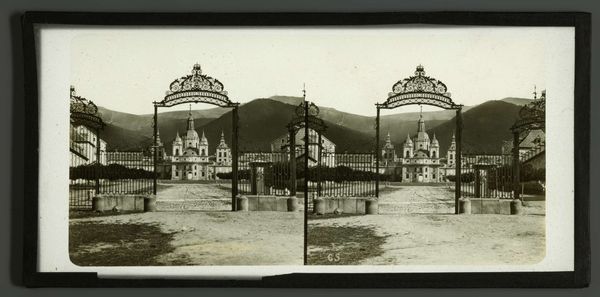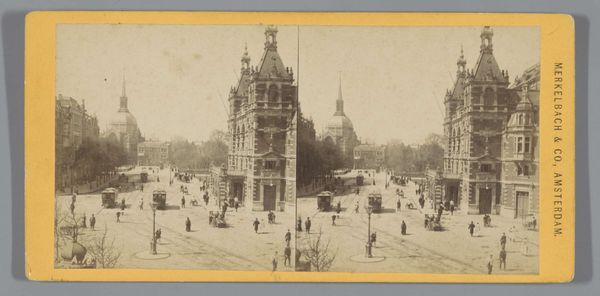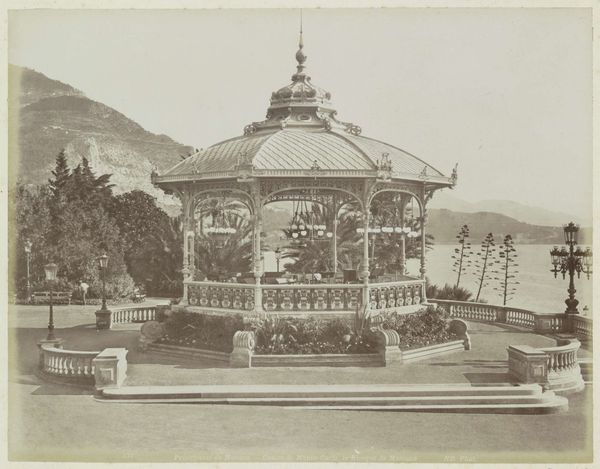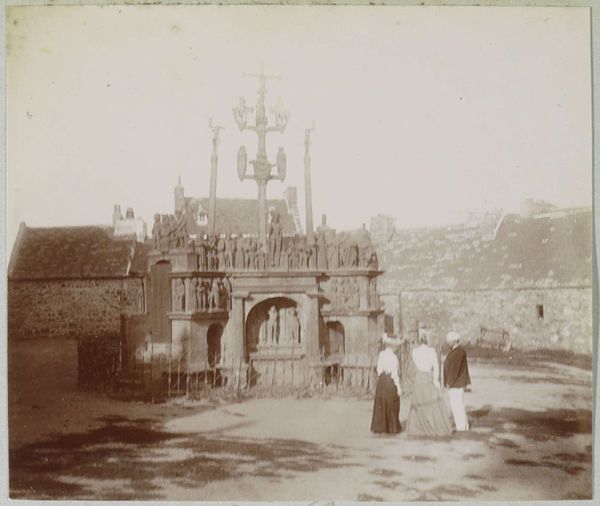
print, public-art, photography, site-specific, albumen-print
# print
#
landscape
#
public-art
#
archive photography
#
photography
#
historical photography
#
site-specific
#
19th century
#
albumen-print
Dimensions: height 97 mm, width 140 mm
Copyright: Rijks Museum: Open Domain
Editor: This albumen print, taken before 1880 by Auguste Garcin, showcases the Monument of the Duke of Brunswick in Geneva. The monument itself strikes me as almost aggressively ornate against the softer background of the city and water. What can you tell me about the significance of this monument and how we should understand it today? Curator: Look closely at the architectural style. Doesn't it evoke a sense of medieval grandeur, echoing gothic reliquaries and tombs? The Duke, through this monument, appropriates those symbols of power and legacy. Now, consider Geneva's history as a center of Calvinism, known for its austerity. The Duke's extravagant monument stands in stark contrast, almost as a form of cultural and symbolic conquest. It’s as if he’s deliberately placing himself outside of and above Geneva's cultural memory. Editor: So, it’s not just a monument, it’s a statement. A rather bold one. Was this Duke particularly beloved, then, to warrant such a grand commemoration? Curator: Not exactly. The Duke was a controversial figure, and the monument's placement even sparked debate. It makes you wonder: what kind of cultural tension is visualized here, and what power dynamics are at play? What continuities with other controversial monuments do you observe? The monument almost demands a reading against the grain, a questioning of its very presence. Editor: It's fascinating how a single image can reveal layers of cultural conflict and memory. Thanks for unpacking that for me! Curator: Indeed. Visual symbols have a language all their own, and learning to read that language opens up entire worlds of meaning and historical understanding.
Comments
No comments
Be the first to comment and join the conversation on the ultimate creative platform.
